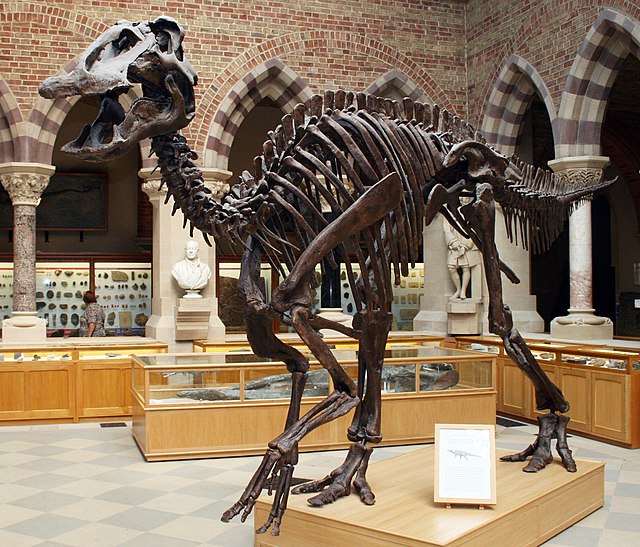Shantungosaurus is a genus of very large saurolophine hadrosaurid dinosaur found in the Late Cretaceous Wangshi Group of the Shandong Peninsula in China, containing a single species, Shantungosaurus giganteus. The stratigraphic interval of Shantungosaurus ranges from the top of the Xingezhuang Formation to the middle of the Hongtuya Formation, middle to late Campanian in age. Shantungosaurus is so far the largest hadrosauroid taxon in the world, with size estimates around 15–17 metres (49–56 ft) in length and 13–16 metric tons in body mass.
Shantungosaurus
Sacrum once classified as Huaxiaosaurus
Saurolophinae is a subfamily of hadrosaurid dinosaurs. It has since the mid-20th century generally been called the Hadrosaurinae, a group of largely non-crested hadrosaurs related to the crested sub-family Lambeosaurinae. However, the name Hadrosaurinae is based on the genus Hadrosaurus which was found in more recent studies to be more primitive than either lambeosaurines or other traditional "hadrosaurines", like Edmontosaurus and Saurolophus. As a result of this, the name Hadrosaurinae was dropped or restricted to Hadrosaurus alone, and the subfamily comprising the traditional "hadrosaurines" was renamed the Saurolophinae. Recent phylogenetic work by Hai Xing indicates that Hadrosaurus is placed within the monophyletic group containing all non-lambeosaurine hadrosaurids. Under this view, the traditional Hadrosaurinae is resurrected, with the Hadrosauridae being divided into two clades: Hadrosaurinae and Lambeosaurinae.
Saurolophinae



